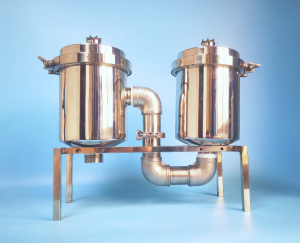In the chemical industry, liquid mixing represents a fundamental process operation, particularly evident in adhesive production. During the mixing procedure, the introduction of air often leads to bubble formation within the liquid, potentially compromising product quality. To eliminate these bubbles, vacuum degassing has emerged as an effective technical solution. This process utilizes vacuum pumps to create a pressure differential that expands and removes entrapped bubbles from the liquid, thereby enhancing product purity and performance characteristics.
The vacuum degassing process operates on well-established physical principles. As the vacuum pump reduces pressure above the liquid surface, the difference between the internal bubble pressure and the surrounding environment causes bubbles to expand and rise to the surface. This controlled expansion enables efficient removal of even microscopic bubbles that would otherwise remain trapped in viscous materials. For high-value products like optical adhesives or precision coatings, this process is indispensable for ensuring optimal clarity and functional performance.

However, a significant challenge arises during vacuum extraction: the potential for liquid droplets or foam to be drawn into the vacuum pump. This not only risks mechanical damage to the pump's internal components but also compromises the degassing efficiency. The presence of liquid in the pump oil can lead to emulsion formation, reducing lubrication effectiveness and potentially causing corrosion. In severe cases, liquid ingress may result in catastrophic pump failure requiring extensive repairs.
To address this critical issue, gas-liquid separators serve as essential protective devices. These separators function through well-engineered mechanisms - either utilizing centrifugal force in cyclone-type designs or gravitational separation in baffle-type configurations. As the air-liquid mixture enters the separator, the different densities of the components cause them to separate naturally. The purified gas stream then proceeds to the vacuum pump while the separated liquid is drained through dedicated outlets.

The implementation of proper gas-liquid separation provides multiple benefits to chemical processing operations. It extends vacuum pump service life by 40-60%, reduces maintenance frequency by half, and maintains stable vacuum levels throughout the degassing process. For continuous production operations, this reliability translates to fewer interruptions and more consistent product quality.
Through the combined application of vacuum degassing technology and appropriate protective equipment, the chemical industry achieves superior product quality control while minimizing bubble-related defects. The gas-liquid separator thus represents not merely an accessory but an essential component that ensures both process efficiency and equipment protection in vacuum-based operations.
Post time: Sep-25-2025






